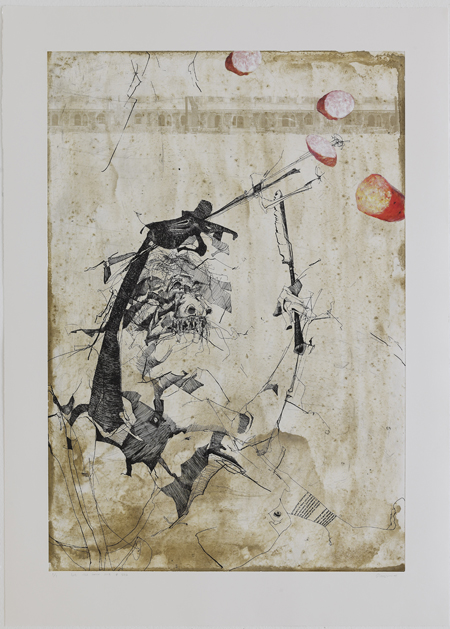Artist Profiles > A > Christine Ay Tjoe
“I find solace in pressing the needle hard onto the plate, releasing restrained emotions in expressive, abrupt, angular lines.” – Christine Ay Tjoe
Christine Ay Tjoe was born in 1973, Bandung, West Java. She is one of Indonesia’s most celebrated contemporary female artists. She began her career as a graphic artist, exploring the intaglio drypoint printing technique. Ay Tjoe then moved to working with textiles before returning back to her artistic practice in the early 2000. Her practice encompasses a wide oeuvre of art forms – from painting on canvas, works on paper, to sculptures and large-scale installations – that focuses on the human condition and addresses themes of philosophy and spirituality.
Recognised for her mastery with drypoint technique, Ay Tjoe has brought new lustre to the art of printmaking. Her experimentation with drypoint has heavily influenced her practice as she continues to use line to structure her works, with palettes characterised by earthy tones and deep reds; strong, charged colours that allude to powerful emotions. Ay Tjoe’s works are reflective of her inner thoughts and happenings in her personal life. She embraces the emergence of characters or creatures that form spontaneously in her paintings, using them as representatives for forces of authority and higher beings.
Ay Tjoe has exhibited widely, with a major retrospective of her works held at SongEun ArtSpace, Seoul (2015). Notable solo exhibitions include Myriad of ‘paste’, Ota Fine Arts, Tokyo (2016), Christine Ay Tjoe at White Cube, Bermondsey (2016). The works created in her residency in STPI were shown at Christine Ay Tjoe: Eating Excess, STPI Gallery, Singapore (2009). Other showcases include Taboos and Transgressions in Contemporary Indonesian Art at the Johnson Museum at Cornell University, New York (2005); and Beijing International Art Biennale (2003). She has been featured in group exhibition at institutions such as the National Taiwan Museum of Fine Arts, Taichung (2012); Fondazione Claudio Buziol, Venice (2011); Shanghai Contemporary (2010); National Gallery, Jakarta (2009); and the China National Museum of Fine Art (2003).


